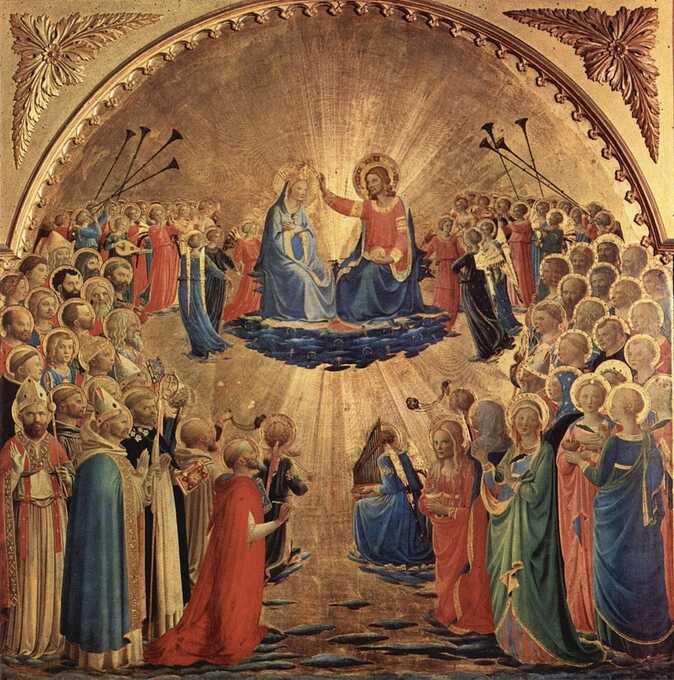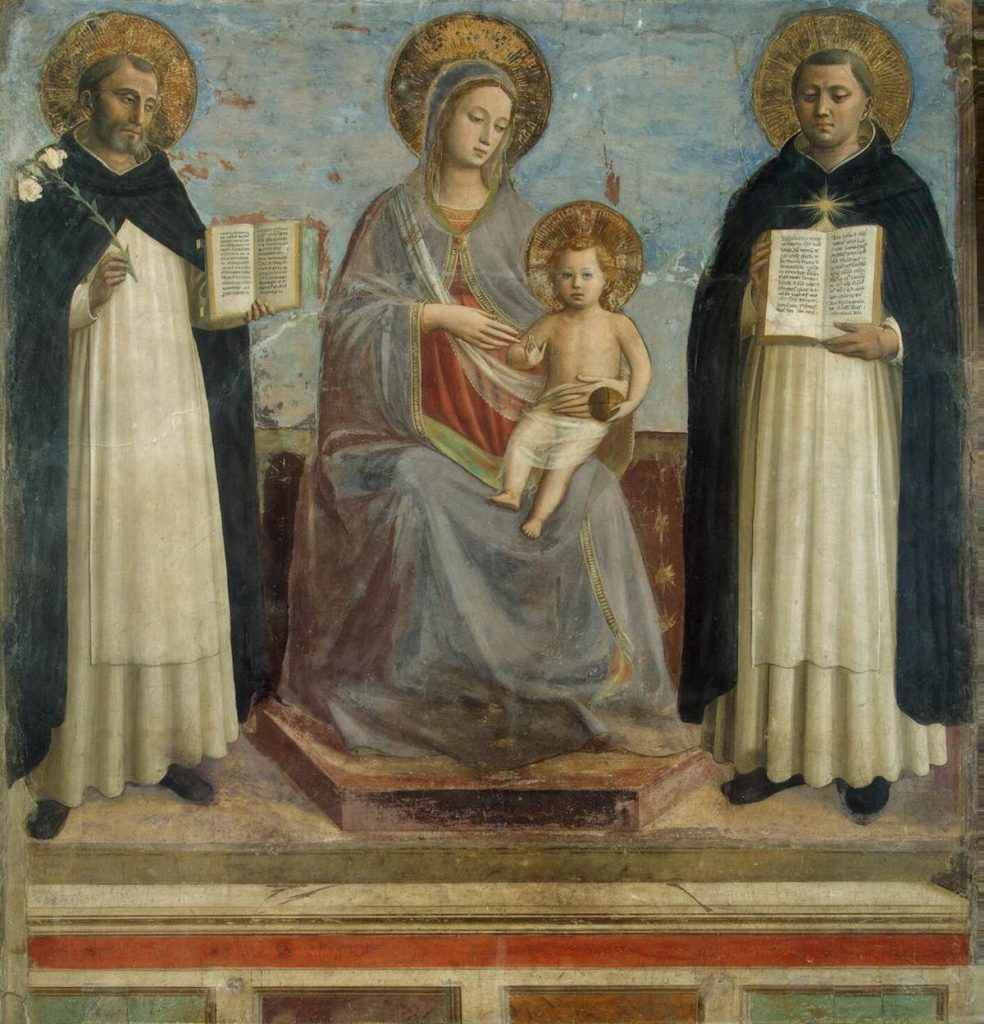Fra Angelico was what some might say in today’s age, an art legend. In the 15th century, the art community described him as being “A rare and perfect talent”. When most people look at Angelico’s work, they are often immediately captivated by the surreal emotions portrayed in his paintings, almost finding it impossible to look away. Angelico’s original name was Guido di Pietro before he became a Dominican Friar, between 1420 and 1422. Born in 1395, Vicchio Italy, he developed an early Renaissance style that embodies a serene religious technique with a classical influence. Giorgo Vasari, a painter and biographer, claims that Angelico was tutored by the most talented painter of the Gothic tradition, Lorenzo Monaco, whose famous delicacy execution and vibrant luminosity is easily recognized in Angelico’s paintings. Angelico’s style was significantly influenced by his fellow Friar, St. Antoninus Pierozzi, who also is credited for Angelico’s faith. Many say Angelico invented emotional interiority in art, heavily influencing Michelangelo, Leonardo da Vinci, and Mark Rothko’s world-renowned style.

Commissioned by the nuns of the Santa Maria Nuova Hospital, The Coronation of the Virgin is one of Angelico’s most mesmerizing pieces, depicting Jesus and the Virgin Mary in Heaven. Jesus is crowning Mary as the Queen of Heaven. The painting contains Gothic elements that are typically influenced by the Renaissance. The painting is now located in the Museum of San Marco in Florence.

The Adoration of the Magi was painted after the death of Lorenzo de’ Medici, “il Magnifico,” Florence’s respected leader. When looking at this phenomenon, it probably doesn’t surprise you that it was the most treasured family possession in the palace for 40 or 50 years. This painting also has the Virgin Mary as one of its focal points, with her face delicately portrayed. On the left portray the wise men from the bible presenting their gifts to Christ. This painting contains a lot of symbolic meaning including the crumbling architecture brought about by Jesus’ birth, and the peacock’s flesh was thought to be incorruptible, symbolizing eternal life and Jesus’ Resurrection.

The Virgin and Child with St. Dominic and Thomas Aquinas is currently located at the State Hermitage Museum in Russia. By now you can probably tell how much Angelico’s work was influenced by his faith. St. Dominic is featured holding a lily representing his notable chastity. The painting is now located at the Hermitage Museum in St Petersburg.

Dedicated to the two medical saints, Cosmas and Damian, the San Marco Altarpiece represents the Virgin Mary and Child surrounded by Saints and Angels. Commissioned for the main altar of the church of the Convent of San Marco. This legendary piece can be seen at the Museo di San Marco, in Florence.

The Mocking of Christ is one of Angelico’s most famous and powerful paintings. My first time seeing this piece online I completely forgot I was doing a homework project because I was lost examining the masterpiece. In this painting Angelico depicts Christ on a raised dais, seated on a red box, symbolizing several mockeries experienced before the crucifixion. Christ is blindfolded just like he was when taunted, and we can subtly see his eyes closed, showing the humiliation he felt. The Virgin Mary and St. Dominic lay beside him helplessly with Mary unable to look upon him in sadness. This emotional piece is Princeton University Art Museum in New Jersey, and it’s safe to say I will 100% pay it a visit in my travels.
Sources:
https://www.wga.hu/html_m/a/angelico/07/altar_sm.html
https://www.nga.gov/collection/highlights/angelico-lippi-the-adoration-of-the-magi.html
https://www.theparisreview.org/blog/2019/08/19/fra-angelicos-divine-emotion/
https://www.britannica.com/biography/Fra-Angelico
https://www.tripimprover.com/blog/coronation-of-the-virgin-uffizi-by-fra-angelico
October 18, 2021 at 5:15 pm
Writing comment from Patrick
Nice storytelling, conversational and engaging. Suggest reading out loud so you can spot when perfectly fine sentences go off. This painting contains a lot of symbolic meaning including the crumbling architecture brought about by Jesus’ birth, and the peacock’s flesh was thought to be incorruptible, symbolizing eternal life and Jesus’ Resurrection. (and the peacock’s flesh, which was thought …). Also would reveal repetition, such as saying a painting in in the Hermitage twice. Writing is rewriting (and reading aloud before you do.) Go Caleb, go.